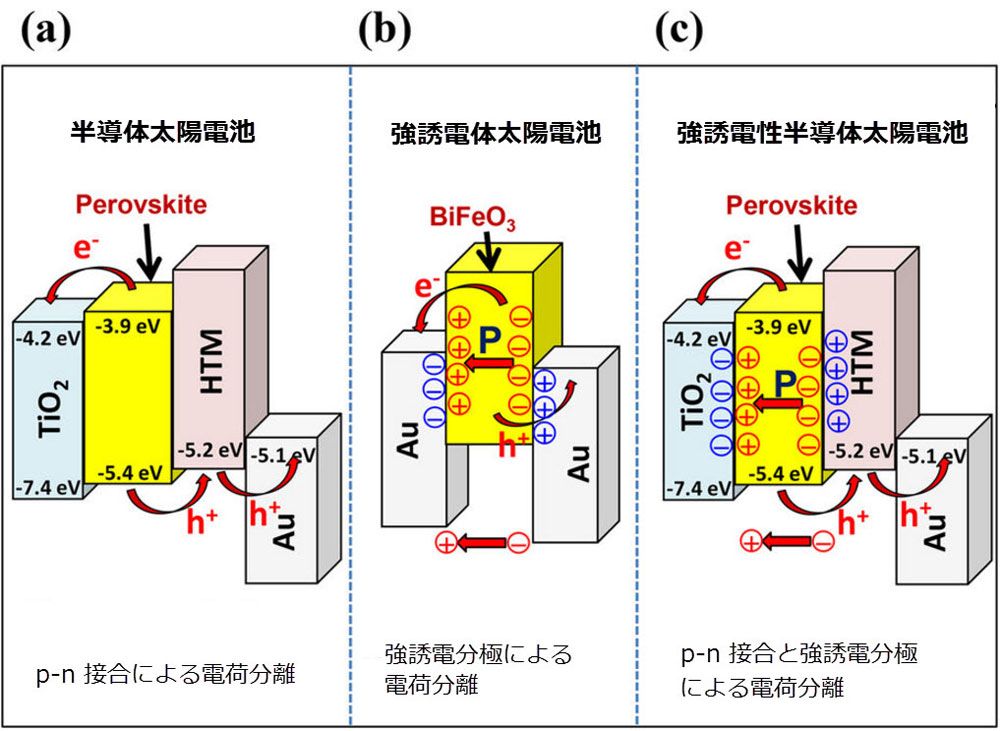Research Abstract
CH3NH3PbI3−xClxペロブスカイトの反強誘電的性質とペロブスカイト太陽電池における電荷分離への影響
Antiferroelectric Nature of CH3NH3PbI3−xClx Perovskite and Its Implication for Charge Separation in Perovskite Solar Cells
2016年7月29日 Scientific Reports 6 : 30680 doi: 10.1038/srep30680

ペロブスカイト太陽電池(PSC)は、高性能を示すため科学的関心を集めてきた。分極に対するPSCの異常挙動はイオンマイグレーションまたは強誘電挙動に起因すると一部の研究者は示唆している。これまでの実験結果と理論計算によって、有機-無機ペロブスカイトに強誘電性の可能性があることが示唆されている。しかし、PSCにおけるペロブスカイト光吸収体の強誘電的性質を明確に排除した研究はまだない。P-E(分極-電場)ループのヒステリシスは、強誘電性を裏付ける重要な証拠となる。本研究では、CH3NH3PbI3−xClxペロブスカイトについてP-Eループ測定、詳細な構造研究、誘電挙動解析、相転移研究を行った。その結果、室温でCH3NH3PbI3−xClxペロブスカイトは反強誘電相であることが示唆された。この反強誘電相は、分極処理によって強誘電相に変換され、室温付近で強誘電体的なヒステリシスP-Eループと誘電挙動を示す。すなわち、ペロブスカイトはPSC動作条件下で強誘電分極を起こしうる。さらに、我々は、強誘電分極がPSC電荷分離に及ぼす影響についても考察している。
Corresponding Authors
Perovskite solar cells (PSCs) have been attracted scientific interest due to high performance. Some researchers have suggested anomalous behavior of PSCs to the polarizations due to the ion migration or ferroelectric behavior. Experimental results and theoretical calculations have suggested the possibility of ferroelectricity in organic-inorganic perovskite. However, still no studies have been concretely discarded the ferroelectric nature of perovskite absorbers in PSCs. Hysteresis of P-E (polarization-electric field) loops is an important evidence to confirm the ferroelectricity. In this study, P-E loop measurements, in-depth structural study, analyses of dielectric behavior and the phase transitions of CH3NH3PbI3−xClx perovskite were carried out and investigated. The results suggest that CH3NH3PbI3−xClx perovskite is in an antiferroelectric phase at room temperature. The antiferroelectric phase can be switched to ferroelectric phase by the poling treatment and exhibits ferroelectric-like hysteresis P-E loops and dielectric behavior around room temperature; namely, the perovskite can generate a ferroelectric polarization under PSCs operating conditions. Furthermore, we also discuss the implications of ferroelectric polarization on PSCs charge separation.

